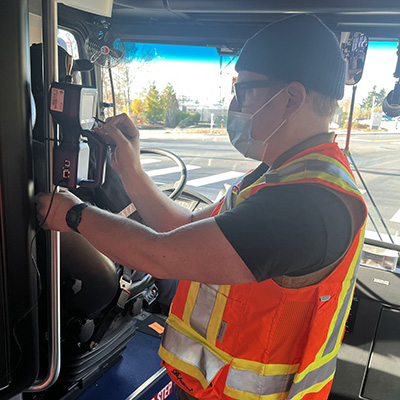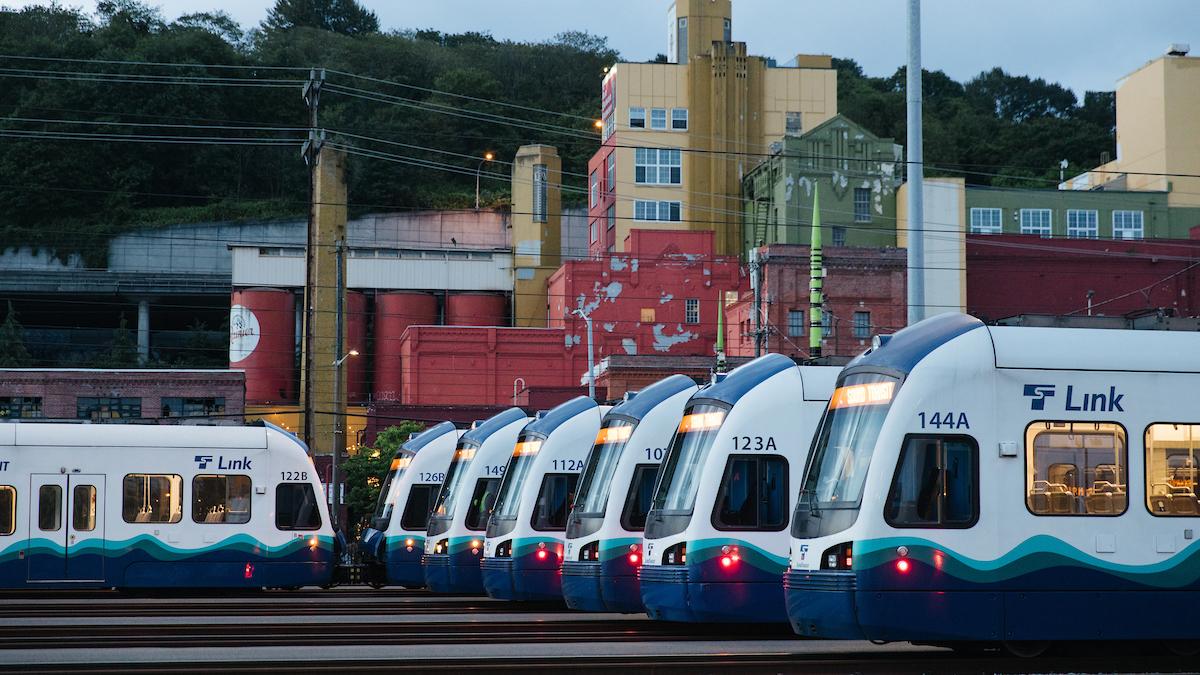University of Washington researchers are working with Pacific Northwest transit agencies to study whether illicit drug use on buses and trains may affect air quality in the vehicles.
The research team is collecting samples and assessing airflow on buses and trains this spring in a first-of-its-kind study to address concerns about increased use of fentanyl and other drugs and whether their use on transit vehicles may lead to secondhand exposures.
The findings could lead to improvements in air flow, cleaning protocols and filters on buses and light rail to better protect drivers, said Marissa Baker, study leader and assistant professor in the UW Department of Environmental & Occupational Health Sciences (DEOHS).
The research is part of a multi-agency effort in Washington and Oregon with partner agencies that include King County Metro, Sound Transit, Community Transit, Everett Transit and TriMet in Portland. The Amalgamated Transit Union representing transit drivers is also actively involved.
"It's important to investigate emerging occupational hazards and to understand how smoke generated on a bus or train could impact the operator,” Baker said.
“There is still a lot we don't understand about occupational exposure to fentanyl smoke. This study will help us learn how it moves though a transit vehicle, whether it is reaching the driver and if it leaves traces on vehicle surfaces.”
Collecting samples from air and surfaces

Some Pacific Northwest bus drivers and train operators have reported being exposed to drug smoke, vapors or aerosols during their work shifts because of people using drugs in their vehicles.
Researchers are installing air monitoring equipment on a small number of buses and light-rail trains in the Seattle area first, with routes selected in coordination with agency partners.
Small, battery-operated air sampling pumps will be placed around the buses, including near the operator. In light-rail trains, air sampling units are inserted into the train operator’s door, with the filter facing out to the passenger compartment.
The team will also collect samples from surfaces inside the buses and trains to test for drug residue.
No individual-level or personally identifiable data will be collected. The project ends in the fall.
Challenges of gathering, interpreting the data
The study poses special challenges for the research team, said Marc Beaudreau, research industrial hygienist and lab manager of the DEOHS Field Research and Consultation Group, who is part of the study team.
Researchers will test for fentanyl and other opioids, methamphetamine, heroin and related compounds. The team worked with partners to carefully place sampling devices in areas of the vehicles where drug use is more likely while not impacting operations or passengers.
Confirming that someone has used drugs on a bus or train before testing a sample is key to using study funds wisely, Beaudreau noted.
But in most cases, researchers won’t be able to personally observe the drug use. Instead, they will rely on transit operators or others to be aware of and report a potential drug-use event.
“The big issues are having the sampling equipment in the right place, being there at the right time, confirming the event and getting quality data,” Beaudreau said.
Interpreting any data they gather will also be a challenge. Even if they know a drug-use event occurred, researchers won’t know exactly what the drug was or its potency, and the amounts being measured may be tiny.
And it’s important to note that while researchers may be able to measure air concentrations of drug-related compounds, the data won’t answer questions about what is or is not a safe level of exposure, he said.
Driver survey about illicit drug use on transit
DEOHS researchers also plan to work with the transit union on a separate survey of transit operators to understand their risk perceptions, stressors, job satisfaction, how often they observe illicit drug use and physical symptoms they have experienced following a drug-use event on their vehicles.
“While drug incidents on Metro are not common, our goal remains zero,” according to a recent King County Metro blog post about the study. “When an incident does happen, not enough is known about air flow and whether substances linger.”
The research comes as Metro and other transit agencies simultaneously work internally, with partners and with law enforcement to more effectively prevent all substance use on transit, according to the post.
Other DEOHS researchers participating in the study are Chris Zuidema, clinical assistant professor, and Associate Professor Edmund Seto. Other team members and contributors include DEOHS PhD student Pranav Srikanth, DEOHS research coordinator Lily Monsey, PhD students Lilian Liu and Shirley Huang and undergraduate students Bridget Ury and Greta Gunning.




